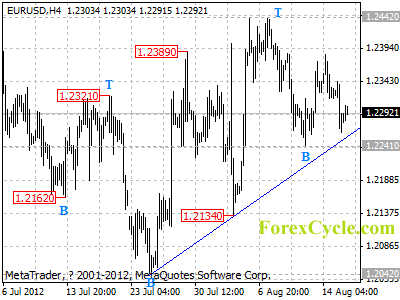London Gold Market Report
from Ben Traynor
BullionVault
Wednesday 15 August 2012, 07:00 EDT
THE WHOLESALE MARKET gold price fell back below $1600 an ounce during Wednesday morning’s London trading, hitting its lowest level for nearly two-weeks, while European stock markets also traded lower, as analysts speculated on the prospects for a third round of quantitative easing (QE3) from the Federal Reserve following the release of positive US economic data.
“The market is disappointed that [gold] was not able to revisit the July high of $1633,” says the latest technical analysis note from bullion bank Scotia Mocatta.
“The closest support comes in at $1584.”
The silver price fell as low as $27.60 per ounce this morning – down 2% for the week so far – while other commodities were broadly flat and US Treasury bond prices fell.
A day earlier, the gold price dropped over 1% in less than an hour Tuesday, as the Dollar rallied following publication of better-than-expected US retail sales data.
“Good news for the economy is bad news for gold,” says Yuichi Ikemizu, Standard Bank’s head of commodity trading, Japan.
“Current data reduce the probability of QE3,” adds Commerzbank head of commodity research Eugen Weinberg, “which means that gold may find it difficult in the near term to make any significant price gains.”
“Any accelerated rally is unlikely to sustain,” agrees Pradeep Unni, senior analyst at commodity brokerage Richcomm Global Services in Dubai.
“Gains beyond $1630 seem to be a near impossibility unless QE is announced from either [Europe] or the US. Gold is supported at 1585-1590.”
Here in the UK, the unemployment rate fell to its lowest level in 12 months over the three months to June, dropping to 8.0%, according to figures published by the Office for National Statistics Wednesday.
“There’s an Olympic Games effect,” says Tom Vosa, head of market economics, Europe at National Australia Bank.
“So the expectation will be that this is short-lived and [the unemployment rate] will pop back up again in maybe August or September.”
The Bank of England’s Monetary Policy Committee meantime voted unanimously to leave interest rates and quantitative easing on hold when they met earlier this month, minutes of the meeting published Wednesday show.
“For most members, the decision this month was relatively straightforward,” the minutes say.
“For some members, the decision was nevertheless more finely balanced, since a good case could be made at this meeting for more asset purchases.”
The Bank increased the size of its asset purchase program, otherwise known as quantitative easing, to £375 billion last month, while its main policy rate has stayed at a record low 0.5% since March 2009.
British bank Standard Chartered has agreed to pay $340 million to settle the case brought against it by the New York State Department of Financial Services, which accused StanChart of being a “rogue institution” over dealings with Iran.
Over in Europe, Greece is planning to ask for an extra two years in which to implement its austerity program, extending it until 2016, according to documents obtained by the Financial Times.
Spain’s banks meantime have become increasingly reliant on funding from the European Central Bank, with total net lending by the Eurosystem to credit institutions growing more than sevenfold over the 12 months to July, FT Alphaville reports.
“This emphasizes the continual struggles that the Spanish banks are having in funding themselves and the huge role that the ECB now has in funding the banks of the periphery,” says a note from Rabobank.
In the US, Paulson & Co., the hedge fund run by John Paulson, increased its holding of shares in the world’s largest gold ETF the SPDR Gold Trust (GLD) during the second quarter, Securities and Exchange Commission filings published Tuesday show. Paulson & Co. raised its stake by 26% to 21.8 million shares.
Soros Fund Management, which sold most of its GLD position last year, doubled its stake during the course of Q2 to take it to 884,400 shares. Hedge fund Eton Park Capital meantime sold its entire GLD position in Q2.
The overall volume of gold bullion held by the GLD fell by 7.1 tonnes to 1279.5 tonnes over course of Q2, while the Dollar gold price dropped 3.8%, the biggest quarterly fall since Q3 2008. The GLD held 1258.1 tonnes as of the end of Tuesday’s trading.
Ben Traynor
BullionVault
Gold value calculator | Buy gold online at live prices
Editor of Gold News, the analysis and investment research site from world-leading gold ownership service BullionVault, Ben Traynor was formerly editor of the Fleet Street Letter, the UK’s longest-running investment letter. A Cambridge economics graduate, he is a professional writer and editor with a specialist interest in monetary economics.
(c) BullionVault 2011
Please Note: This article is to inform your thinking, not lead it. Only you can decide the best place for your money, and any decision you make will put your money at risk. Information or data included here may have already been overtaken by events – and must be verified elsewhere – should you choose to act on it.




